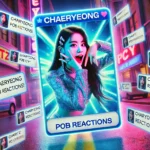Spanking stories have been a part of literature and popular culture for many years, often sparking debate and varied reactions. These narratives, which typically involve the act of spanking as a central theme, can be found in different contexts—ranging from educational materials and parenting advice to fictional works and erotic literature. This article delves into the complexities surrounding spanking stories, examining their origins, the various forms they take, and the broader cultural and psychological implications.
The Origins and Evolution of Spanking Stories
Spanking, as a form of physical discipline, has a long history across various cultures. Traditionally, it was seen as a method of correcting behaviour, particularly in children. Consequently, stories about spanking often appeared in educational materials, folklore, and moral tales, where the act was portrayed as a necessary means of instilling discipline and teaching lessons. In these narratives, spanking was usually depicted as a consequence of disobedience or misconduct, reinforcing societal norms and expectations.
Over time, the portrayal of spanking in stories evolved. In some cultures and communities, attitudes toward physical punishment began to change, with increasing recognition of the potential psychological harm and the effectiveness of non-physical forms of discipline. This shift influenced how spanking was depicted in literature and media. While some stories continued to present spanking in a traditional, disciplinary context, others began to question or critique the practice, reflecting a growing awareness of its controversial nature.
Different Forms of Spanking Stories
Spanking stories can be categorized into several distinct genres, each with its own set of themes and purposes. Understanding these different forms helps to illuminate the varied ways in which spanking is represented and interpreted.
- Educational and Moral Stories: These stories are often aimed at children or parents and are intended to convey moral lessons. Spanking is typically portrayed as a consequence of misbehavior, with the narrative emphasizing the importance of following rules and respecting authority. In some cases, these stories are used to justify the use of spanking as a disciplinary tool.
- Historical and Cultural Narratives: In many cultures, stories that involve spanking reflect historical attitudes toward discipline and authority. These narratives often provide insight into the social norms and practices of different time periods and communities. In this context, spanking is depicted as a common and accepted form of punishment, often without question or critique.
- Fictional and Erotic Literature: Spanking stories are also prevalent in fictional and erotic literature, where the act is often depicted in a more sensationalized or fantasized manner. In these stories, spanking can serve various purposes, including as a plot device, a symbol of power dynamics, or as a consensual act within a relationship. Erotic spanking stories, in particular, are written for adult audiences and explore themes of dominance, submission, and sexual pleasure.
- Personal Narratives and Anecdotes: Many individuals share personal stories about their experiences with spanking, whether from their own childhood or as parents. These narratives can vary widely in tone and perspective, from those who view spanking as an effective discipline method to those who regret or criticize its use. Personal spanking stories often serve as a way for people to reflect on their own beliefs and practices, and to engage in broader discussions about parenting and discipline.

The Cultural and Psychological Implications of Spanking Stories
Spanking stories, particularly those that involve children, are often surrounded by controversy. The debate centres on the ethical and psychological implications of using physical punishment as a form of discipline. Research has shown that spanking can have long-term negative effects on children, including increased aggression, antisocial behaviour, and mental health issues. As a result, many experts and organizations advocate against spanking, promoting alternative discipline methods that focus on positive reinforcement and communication.
In this context, the portrayal of spanking in stories can influence societal attitudes and beliefs. For example, educational and moral stories that depict spanking as an acceptable form of punishment may reinforce the notion that physical discipline is necessary or effective. On the other hand, stories that critique or question spanking can contribute to a shift in cultural norms, encouraging readers to consider alternative approaches to discipline.
Spanking stories in erotic literature raise different questions, particularly around the themes of consent and power dynamics. In these stories, spanking is often depicted as a consensual act within a sexual relationship, with an emphasis on mutual pleasure and trust. However, the line between consensual and non-consensual behaviour can sometimes be blurred, leading to concerns about the potential for misinterpretation or the normalization of abusive behaviour.
Reflecting on the Role of Spanking Stories
As society continues to evolve, so to do the stories we tell about practices like spanking. These narratives serve as a mirror, reflecting our beliefs, values, and attitudes toward discipline, authority, and relationships. For those who create and consume spanking stories, it’s important to consider the messages these narratives convey and the impact they may have on readers and listeners.
For parents, educators, and writers, this means thinking critically about how spanking is portrayed in the stories they share. Are these stories reinforcing outdated or harmful practices, or are they encouraging reflection and discussion about healthier, more effective approaches to discipline? For readers, it’s about being mindful of the content they consume and questioning the underlying messages and implications.
Conclusion
Spanking stories are a complex and multifaceted genre, reflecting a wide range of attitudes and beliefs about discipline, authority, and relationships. Whether they appear in educational materials, cultural narratives, or erotic literature, these stories have the power to shape our understanding of spanking and its place in society. As we continue to explore and engage with these narratives, it’s crucial to approach them with an open mind, a critical eye, and a commitment to promoting positive, healthy practices in our lives and communities.







